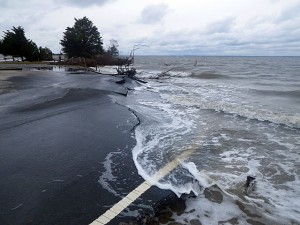Our latest question from the Georgia Climate Project’s Roadmap of important research questions on Georgia’s future climate vulnerability addresses the changing risk of extreme events such as hurricanes, floods and droughts. It asks how the changes in the risks is affecting the costs of addressing climate change on different time scales and what the implication of these changes are. You can see the full list of Roadmap questions at https://roadmap.georgiaclimateproject.org/.
5. How has the changing risk of extreme weather events and shifting baselines impacted short-, medium-, and long-term costs of climate change, and what are the implications of these changes?
Why this question is important: Information on and perceptions of “normal” climate conditions shape decisions and actions on a wide range of topics across the state, including energy and water infrastructure, agriculture, public health, natural resources, and local planning. Georgia is projected to transition towards more extreme climatic conditions on a number of fronts (Melillo et al. 2014), including the frequency and intensity of heavy rainfall events (“low to medium confidence”), drought conditions (“low to medium confidence”), extreme heat events (“high confidence”), and coastal flooding (“high confidence”). As these baselines shift, it may be useful to pursue corresponding shifts in city to state-level infrastructure planning (e.g., urban drainage infrastructure; Kang et al. 2016) and regulatory frameworks (e.g., mandatory planning standards based on the level of a “500-yr-flood”). To facilitate this assessment, a systematic examination within and/ or across sectors and geographies may yield insights into the environmental data underpinning current decision-making and existing policy, and recommend updates to those planning points to conform with projected environmental conditions.
